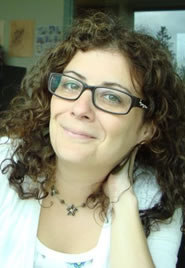Did someone say "bird-off"? How I became an accidental birder
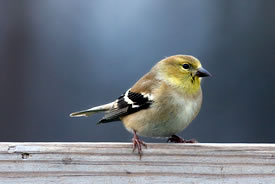
American goldfinch (Photo by Bill Hubick)
A few weeks ago, Kristyn challenged me to a bird-off to count the species in my new Calgary backyard this winter. Unfortunately, my count pales in comparison to hers — clocking in at a mere three species so far this year.
But I do have a wealth of stories a few stories from the birdfeeders at our house in Halifax.
I can’t remember how my fascination with birds began. I think it was one fall morning at my in-laws’ house, sipping tea while marveling at the birds visiting the feeders suction-cupped to the back window and strung on the clothesline. Red-eyed vireos, American goldfinches, black-capped chickadees and red-breasted nuthatches could have kept me entertained all day.
Following that initial introduction, my mother-in-law gave me a plastic feeder and a bag of black oil sunflower seeds. I stuck it onto our northwest-facing window, from which we could spot a band of trees, a wetland and the Halifax Harbour in the distance. And hopefully, soon, a plenitude of birds.
For a couple of weeks, the feeder remained empty, and I worried we'd never have any visitors. But a few weeks later while travelling for work, I received an email from my husband: “Look who I found looking for shelter today!” Attached to the email was a photo of a lone bird weathering out yet another rainy Halifax afternoon in the shelter of our plastic birdfeeder box.
I’ll admit, until these experiences, I hadn’t paid much attention to birds and the list of species I could identify was slim. But although I couldn’t identify it yet, the glimpse of that damp-feathered visitor had me hooked. So much so, that my husband surprised me one day with a book on backyard bird identification, which I kept at the ready, dog-earing pages as I identified new species.
After some research, we identified the soggy bird as a dark-eyed junco. Soon enough, I learned to spot them not only in the feeder, but on the tree-lined pathway behind our house, by sight and by sound. We soon found groups of juncos visiting us. Landing in the feeder, they scuffed at the box with their feet, kicking up seed that landed on the balcony deck to be foraged by other, lazier birds.
A few weeks later, the goldfinches, which we’d never spotted in our neighbourhood until then, started to arrive. They were tidier eaters, and would wait in nearby trees in pairs or alone, flit to the feeders in their distinctive chirpy parabolic flight, peck at the seed for a time, then flit away — bright gashes of yellow in the sky.
Not long after, the chickadees joined the fray. They preferred making quick, repeated darts to grab a single seed at a time, then flying to the nearby forest where they stored the seed in caches.
It wasn't long before I could sit on the back deck on sunny days, and marvel at the birds who would arrive — seemingly unconcerned with my presence. One day as I was reading, I heard a rapid thrill of air near my head — only to look up and discover a hummingbird exploring the pansies growing on our railing. And for several summers, a red-eyed vireo made his home in the small forest band behind the house, ceaselessly singing his distinctive song to let others know: "Here I am! Where are you?"
In the summer, we were surprised by the sunflowers that sprouted in our vegetable patch from the seeds the messy eaters had strewn below the deck. The goldfinches hung to the heavy golden heads, pecking till all that was left was the empty bed where the seed once sat.
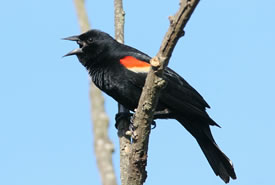
Red-winged blackbird (Photo by Bill Hubick)
And then, a pair of red-winged blackbirds arrived. They made quite a show of letting us know whenever they came, squawking loudly upon landing. After a while, we noticed their beeline to the nearby marsh. A while later, who should announce their arrival but an adult red-winged blackbird and a fledgling!
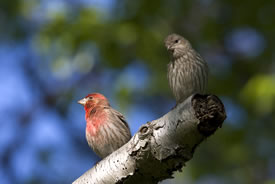
A pair of house finches (Photo by Bill Hubick)
The number and diversity of birds feeding in our backyard continued to increase, feather by feather. One day I spotted a shy blur of red and brown fly away to the forest, which my trusty book told me was a house finch. Then oke day we found a pigeon-sized bird pecking aggressively at the soil with its long beak. A colleague suggested it might be a northern flicker, given its size and distinctive red cheek.
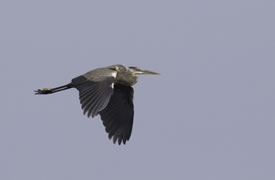
Great blue heron (Photo by Bill Hubick)
Since we were only a few kilometres from the Northwest Arm, which juts out into the Atlantic Ocean, we occasionally saw other, larger birds on their flight to and from the ocean. One afternoon a hawk passed silently overhead in the summer sky, grasping a fish in its talons. Sitting in our front deck one day, I spotted the lazy circles of a bald eagle.
One evening, I noticed the distinguishing long trailing legs of a heron as it flew towards the ocean in the darkening sky. For a few months, a resident loon flew wide brackets around our neighbourhood, laughing as it went. And every so often we’d find mollusc shells in our garden, likely dropped by one of the many passing seagulls.
Come winter, the traffic died down a little, although the juncos and chickadees still occasionally visited. We thought the male goldfinches had migrated, and only the less showy females had stayed. Upon further research we learned male goldfinches lose their bright feathers in the off-season, only dressing in their bright garb and black cap in springtime to attract willing females. With the arrival of spring, we were excited with the increase in species as the birds gradually returned from their overwintering grounds.
And so it was that we became accidental birders.
Last summer, we packed up our house, including the variety of feeders, and moved across the country to Calgary. Since arriving last June, we’ve seen many birds in the neighborhood, including cedar waxwings, gray catbird (which really does sound like a mewing cat), great blue heron, chickadees, sparrows (which I have yet to identify properly), red-tailed hawk, hairy woodpecker, mallards, blue-winged teal and a northern flicker. But our backyard has been quiet, except for the chickadees and sparrows feeding from our seed bell.
Perhaps they need time to lead other birds to our backyard, much as they did in Halifax? Or perhaps I need to try Kristyn's trick of a suet feeder...
What I do know is, I’ll never look at another sky or landscape the same way again. Since becoming an accidental birder, my eyes and ears are now continually attuned to the flight and song birds in the landscape. And when the world is filled with birds, skies and backyards that once seemed empty come to life with the flapping of wings and flight of feathers.

